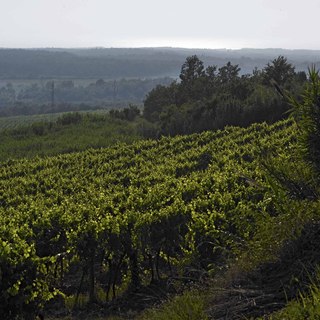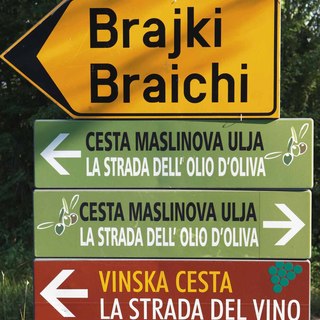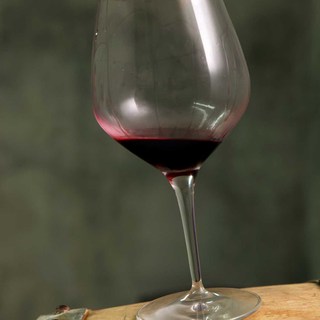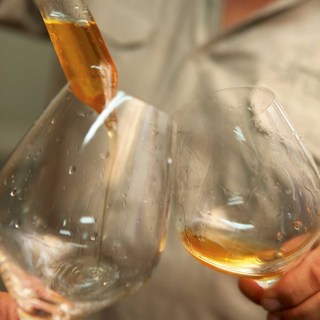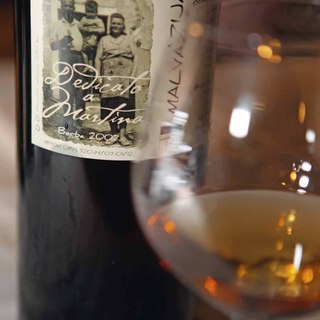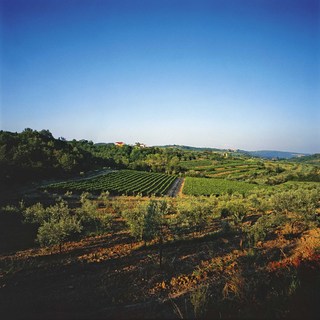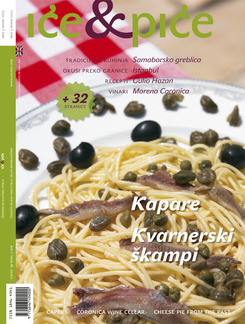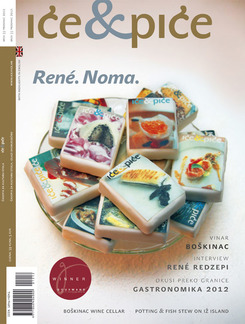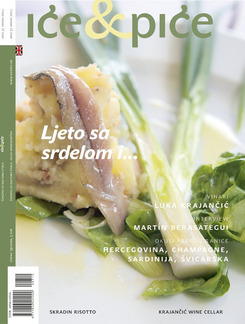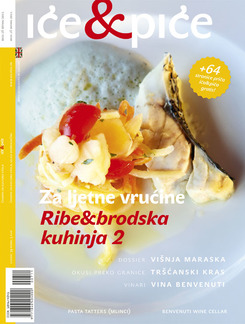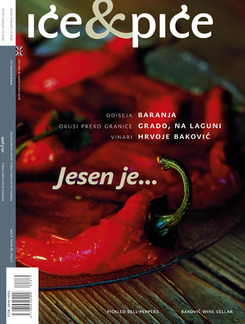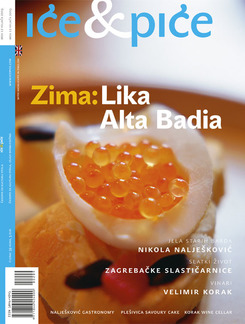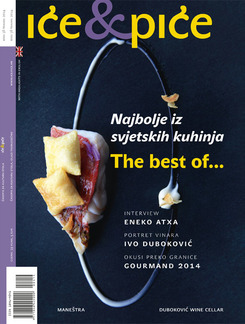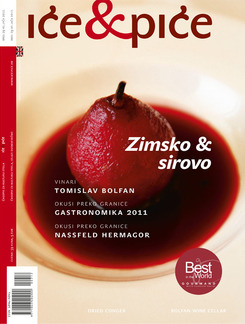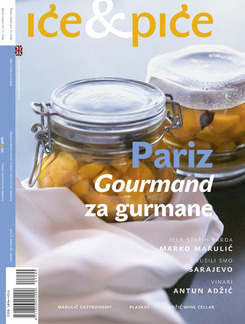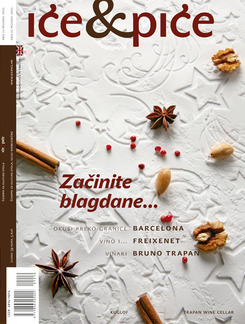Wine cellar’s ID
Family tradition
Once upon a time there lived in Trieste an ostiere, or tavern-keeper, who hailed from Istria. But this was no ordinary tavern keeper who happened to serve wine along with his food. No, he was in love with wine. Particularly in any that was counter, original, spare and strange. He also had a little vineyard, close to Krasica in the Buje region just for his own delight and the delectation of his friends. In his Pergola (for so this osteria was named) our tavern keeper opened and tasted many different wines. He wanted to know about each one: whence it came, who had made it, what the terroir, what the procedure. And of course, while he drank the better wines, he was constantly going over: could he – an ordinary amateur vintner, for such he understood himself – find out how to make similar wine, and how much time and knowledge would he need for it? And then one day, the tavern keeper’s corkscrew paused over a bottle with a most ordinary yellow label on which in big letters was La Castelada, and with somewhat smaller letters, Collio. The heady scents, the powerful and elegant aromas, the minerality that simply bathed the mouth, the creamy aftertaste: La Castelada Collio: 40% Tokay, 40% Pinot Gris, 15% Sauvignon and 5% Rebula. This then is how great loves are formed, or how our tavern keeper got to know the distinctiveness and strength of coupage wines.
Vineyards and varieties
Giorgio Clai (that’s right, the hero of our tale) after in 2002 his health had sent him back from Trieste, where he had lived for 25 years and with his wife Vesna run the family restaurant inherited in 1974 has today: some old, some renovated, some newly planted, a total of 6 hectares of vineyard, in Brajki village by Krasica, close to Buje (white land). Although he holds that the specialness of Istria comes from its indigenous varieties, Clai, a great lover of coupage, also plants Sauvignon Blanc, Pinot Gris and Malvazia, and along with his Refosk/Refosco he also has Cabernet Sauvignon and Merlot. The ratio of whites to reds in his yards is 3:2.
Cellar, technology, wines
Today Clai produces Ottocento White – a coupage of Istrian Malvazia, Sauvignon Blanc and Pinot Gris; Ottocento Red (black) – a coupage of Refosk, that is, Istrian Terrano with the red stalk, Cabernet Sauvignon and Merlot; Sveti Jakov (St James), a pure indigenous Istrian Malvazia; Brombonero – Terrano or Refosco/Refošk, and a smaller amount of Taselo, a dessert wine produced from Muscat that after the vintages is left for the grapes to dry in shallow boxes. Clai doesn’t produce ordinary wines, those we have come to call normal. He does not use either controlled fermentation or stainless steel vats. He says he doesn’t produce biodynamic wines, because he doesn’t use only biodynamic products. His wines are not biological for he doesn’t anything like use the preparations that are allowed in the biological production of wine in order to discipline the wine itself. The closest is perhaps organic wine. My wine is an organic matter, says this impassioned, self-taught winemaker. Chemistry has no access to his vineyard. The same with the cellar. Clai doesn’t use pesticides, and has only organic manure, he feels sick at the idea of selected yeast, doesn’t add sugar to his wine, nor does he clarify it, still less will he filter it. But although he doesn’t stick to them all, he does hold tight to some biodynamic principles like, for example, decanting and bottling wine in line with the phases of the moon.
Family estate
On their estate in Brajki, the Clais have a small tasting room that can hold up to perhaps ten people. Tasting room is not exactly the right expression for a place in which along with top quality Clai wines and the no less top country cooking of his wife Vesna real Lucullan and Dionysian feasts go on at the same time. The saying about apples and trees is amply borne out by Martina, the couple’s daughter, who, though youthful, has already become a past master of the art of making fruit brandies, of which she is a great admirer. And when, after four or five tasty platters that are accompanied by carefully chosen wines, you think you have tasted the whole of the Clai palette, daddy Giorgio will surprise you with a grappa of macerated olive leaves, with Plavina (an old Istrian grape variety) vinegar, or the first Clai sparkling wine (that I wasn’t even supposed to mention).
Philosophy
If you respect the grapes in the vineyard, they’ll respect you in the bottle.
I don’t actually make the wine. It’s all done in the vineyard. In the cellar, I just wait for my labours to turn into wine.
I think of wine made with selected yeasts much as I feel about AI children.
Today, all the problems are solved with yeasts. Like with penicillin once.
What does terroir possibly mean after you have come into the vineyard with a tractor trailer and tipped out half a factory of chemicals, and then you go to the cellar and tip out the other half?
I make wine they way I want to drink it, and bottle it in magnums. These are grande wines for grande moments for grande food and grande company.
Future
In the production so far, Clai has already phased out some of his labels. Each year, I shall make the best wine from my vineyard of that year, says Clai. He sticks to two whites, two blacks, one dessert, and would like to work on his own sparkling wine. He’s thinking about planning another hectare of vineyard, a bit further away from the existing plantations only, as he says, as back up, in case the hail or the peronospora crucially reduces the yield (as in 2008). If it is a bad year, says Clai, I would rather sacrifice quantity to get the quality I want.
